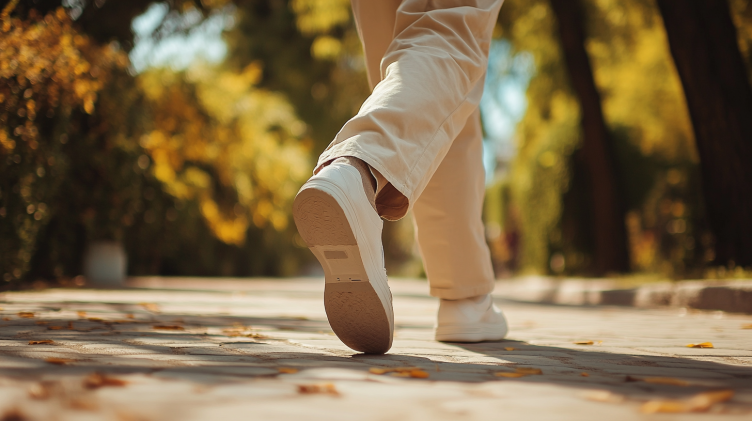Walking is a fundamental part of daily life, but an unusual gait may indicate underlying health issues. Abnormal walking patterns can lead to falls, loss of independence, and serious medical conditions. Recognizing these warning signs early can help prevent complications and improve quality of life. Let’s explore six gait abnormalities and what they might signal about your health.
1. Circular Gait – A Possible Sign of Stroke
If one arm remains bent without swinging and the leg moves in a circular motion instead of stepping forward, this could indicate hemiparesis, a condition often caused by a stroke. This occurs when a stroke damages the brain’s ability to control one side of the body, leading to weakness or paralysis.

What to do: If this gait appears suddenly, seek emergency medical care. Stroke rehabilitation, including physical therapy, can help regain mobility.
2. Drunken Gait – Linked to Alcoholism and Neurological Issues
A slow, unsteady gait with exaggerated steps, resembling intoxication, could be a sign of ataxia, a condition affecting coordination due to damage to the cerebellum. While alcohol consumption can temporarily cause this type of gait, persistent balance issues without drinking may indicate a neurological disorder.

What to do: If symptoms persist, consult a neurologist. Treatment depends on the cause—whether alcohol-related nerve damage or a neurological condition.
3. Festinating Gait – A Classic Parkinson’s Disease Symptom
A festinating gait starts with slow, hesitant steps that quickly transition into a rushed, uncontrolled shuffle. This pattern is often associated with Parkinson’s disease, where the body leans forward, arms stay stiff, and steps become progressively smaller.

What to do: If this gait is accompanied by tremors or muscle rigidity, consult a doctor for neurological testing. Medications like dopamine agonists can help manage symptoms.
4. Waddling Gait – Often Tied to Muscle Weakness
A swaying, side-to-side gait often suggests muscular dystrophy or sarcopenia, conditions that weaken muscles over time. This gait is commonly observed in those with hip instability or progressive muscle loss.

What to do: Strength training and physical rehabilitation can improve muscle tone. If symptoms worsen, a specialist may recommend additional therapy.
5. Steppage Gait – A Neuromuscular Disorder Warning
If you frequently lift your knees abnormally high while walking to prevent dragging your foot, this might indicate foot drop, often linked to peripheral neuropathy or motor neuron disease. These conditions weaken the nerves controlling leg movement.

What to do: If this gait is accompanied by numbness or weakness, a neurological exam is necessary. Treatments include bracing, therapy, or addressing the underlying nerve disorder.
6. Limping Gait – Caused by Joint, Muscle, or Nerve Issues
A limping gait with stiff hips and restricted leg movement might be caused by arthritis, hip dysplasia, or nerve compression. It can also result from injuries affecting the musculoskeletal system.

What to do: If stiffness or pain persists, an orthopedic specialist can provide treatment. Strengthening exercises and proper posture can also help improve movement.
🚶♂️ Improve Your Walking Posture for Long-Term Health
Maintaining good posture while walking is essential for joint health and stability. Here are some tips for an improved gait:
- Walk daily to keep muscles active and flexible
- Stand tall with your shoulders relaxed and arms swinging naturally
- Wear proper shoes that provide arch support
- Strengthen your core and legs through targeted exercises

Summary: Don’t Ignore Abnormal Gait
Your walking pattern can reveal important clues about your health. These six unusual gaits may indicate underlying medical conditions that require attention. If you or someone you know experiences any of these symptoms, seeking medical evaluation early can help prevent complications. Maintaining proper gait not only enhances mobility but also reduces the risk of falls and supports long-term joint health. Stay active, walk with good posture, and prioritize your well-being!



















